



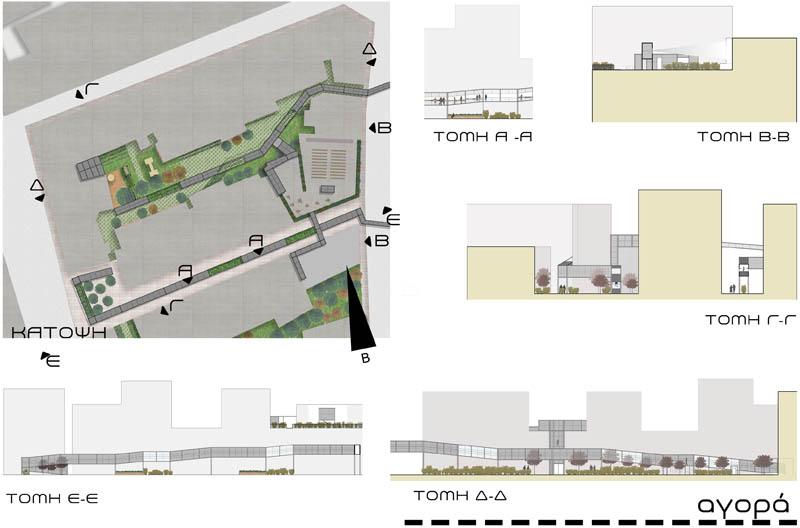

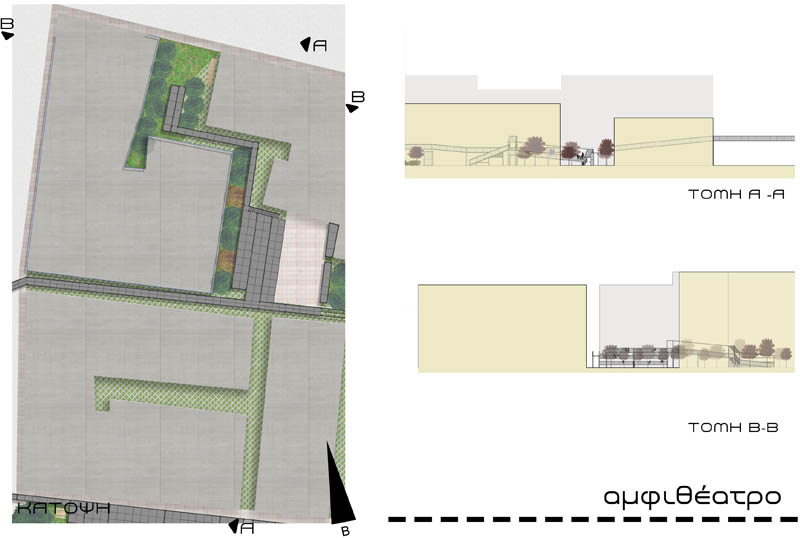

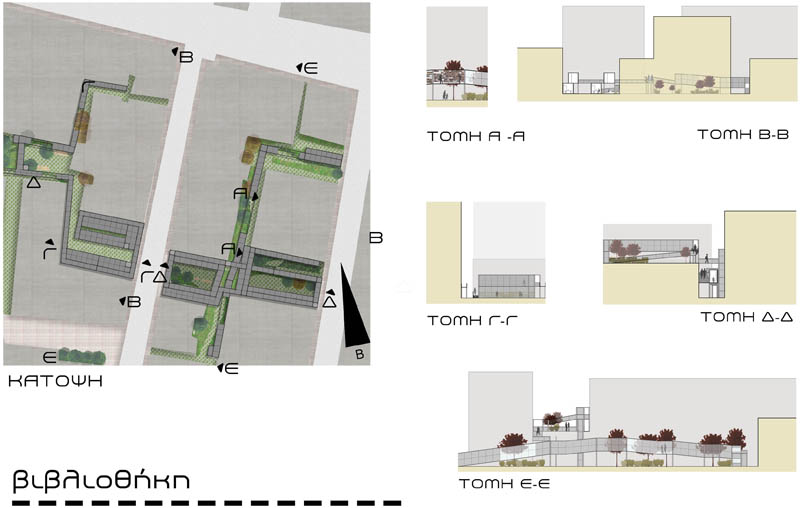



The multiform residential area of Kipseli became a tapestry of uses during the decades varying from office-spaces and small industries to residence of people from all over the world. The abandonment of the place when a part of the population left was replenished with the coming of immigrants, who practically prevented the area’s stagnation.
However the lack of social structures and public spaces create a turning to the inner-private space. This introversion creates the basis for the depreciation of the public space and the completion of the space.
Defining the space as public space and trying to release the daily routine from the limited private space, we interfere in this area. We try to integrate with the consensus of the residents a new route crossing an unspoilt part of the urban web, the “uncovered area”.
This experiment perceives the “uncovered area” as a new route, not as a stop but as a constant flow totally connected with the traces of the street layout. It separates the “uncovered areas” of six blocks of Kipseli area aiming to unify a new route which stands above the ground and adds to the urban web self-managed uses of a public nature.
This is about a light perforated construction that links in vertical and horizontal axis these six blocks of our interference obtaining a double function, as a route as well as being available for public uses serving the needs of the residents (trade, culture etc.). The axis of the zero is being used as much as possible with condensation and rarefaction of uses, where this can be done.
This urban crossing of the block creates a whole new different point of view of the city. From the scale of the apartment building and the block to a possible urban scale. The handling of this as a vital spot of traffic, a passage, reveals in a large scale the front and rare view, making the new point of view of the web a crucial matter.
Supervisor: Paniyiris Costis
Reference Number: 489


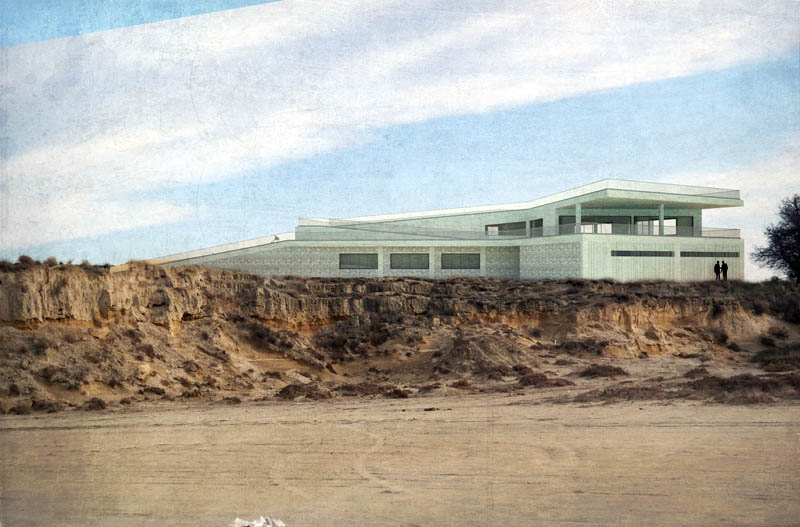





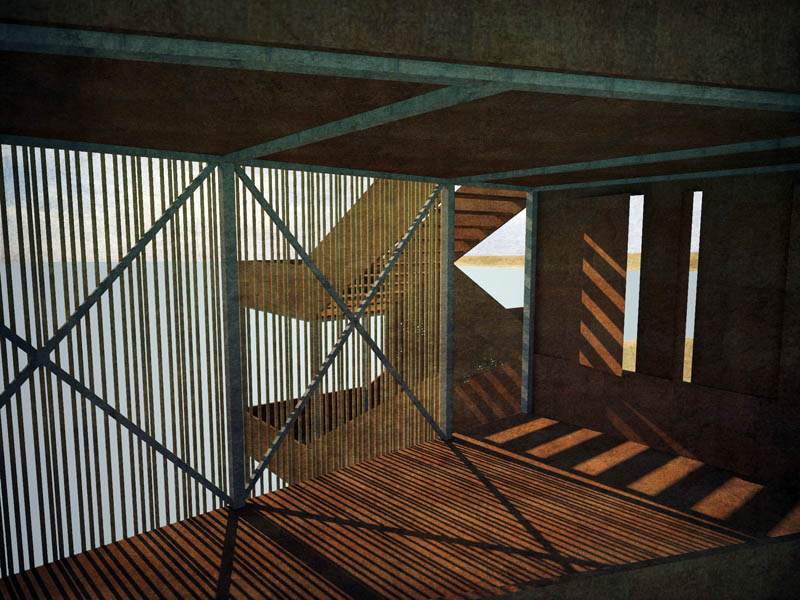



The area under study is the salt lake of Larnaca, which is located at the north of Larnaca. The wetland is considered to be a valuable seaside and of a great importance biotope not only for the city of Larnaca but for whole Cyprus, given the fact that hosts various species of wader and water fowl and other living species??
The salt lake of Larnaca is known since ancient years, thanks to the production and collection of salt, as salt was one of the most important exporting product of Cyprus. The collection procedure stopped in 1987.
The subject of this dissertation is the creation of a historical-environmental center of information as well as the design of a scale within the lake. The whole project will offer to the visitors the opportunity to collect the salt with the purpose to revive the procedure. At this area a number of several trajectories are created within the lake, which are modified depending on the season giving to visitors the possibility to explore the side. Furthermore, the creation of some little “artificial hills/islands” from slime and soil is suggested, in which flamingos and other birds of the area will be able to find food and shelter. In addition part of this dissertation is the design of some rood of movements in the area while in some privileged points of view there will be rest and observation points.
The objective of this dissertation is the maintenance and protection of biodiversity of the lake, while the integration of different activities in the area which is a pull factor for the visitors, aims at the strengthening of the relationship between man and nature.
Supervisor: Manolidis Kostas
Reference Number: 506










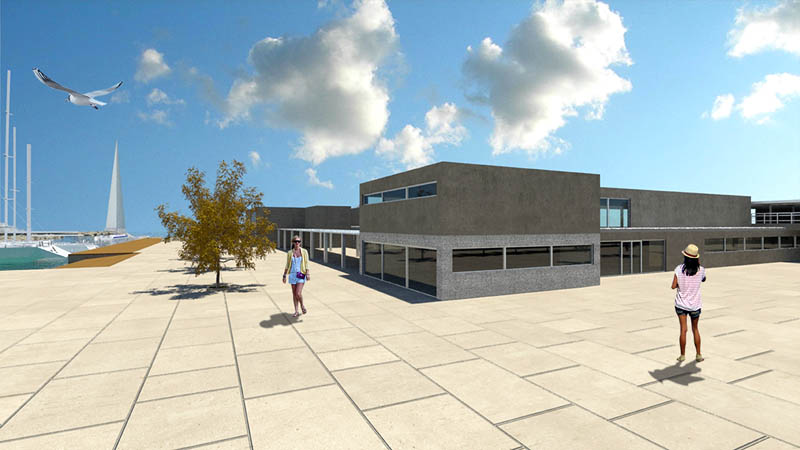

In recentyears, the relationship between the city and the sea is redefined around the world to meet the needs of the ever-swelling "fronts" of economy, society and culture. This thesis concerns the design of sailing and fishing facilities in the coastal zone of Eleusis.
The selected plot follows the pedestrian seaside promenade of the city, while the rest belongs to the port organisation of Eleusis (O.L.E.) and part of it is granted for the operation of a sailing club. The design meets the requirements of the existing association and even to the expansion of people, activities and space functions. The planned spaces animate the area and create an attraction for the public to form an urban, leisure, sport and commercial core framed by the sea and the green.
A basic part of the design and startup of this is the determination of the coastline. East of the existing marina, a second one is created. It is decided that the first marina caters for adults sailors on ships offshore and the second hosts the fishing club and its needs. The third marina is destinated for younger sailors in the south part of the intervention.
The buildings’ location is resulted indirectly from the surrounding area. North and west, placed the shopping, the fishing club while east and south, the fish market is located. The sailing club building is located between the junior sailing marina and the marina of adult sailors. The buildings include secretarial and waiting areas, offices, toilets, changing rooms, sports facilities-gymnasiums, classrooms, storage rooms, workshop, private lounge, restaurant and outdoor areas.
Supervisor: Trova Vasso
Reference Number: 528
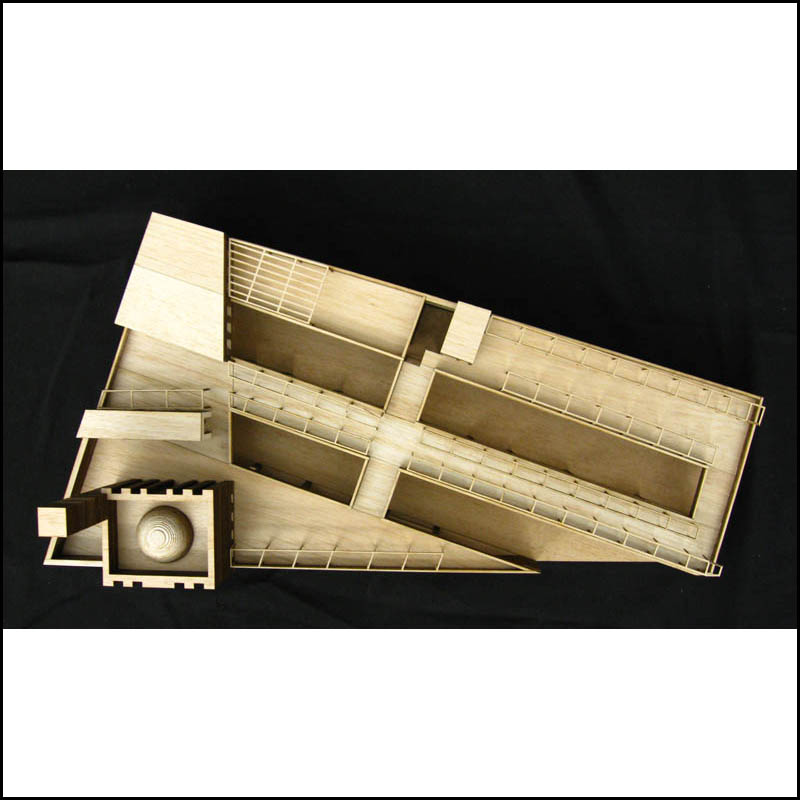

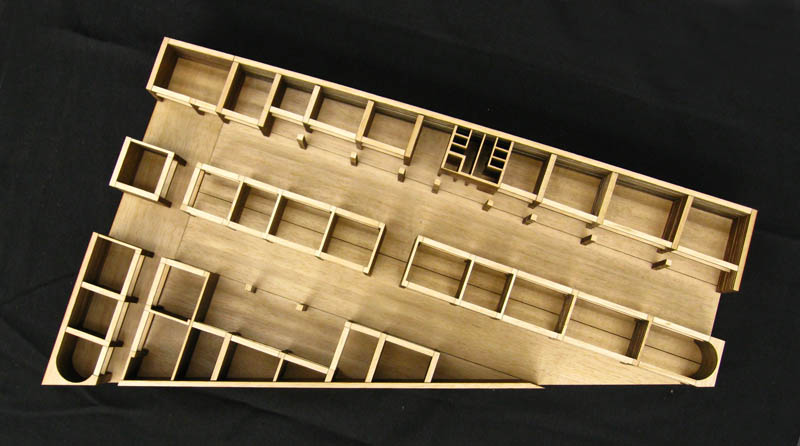

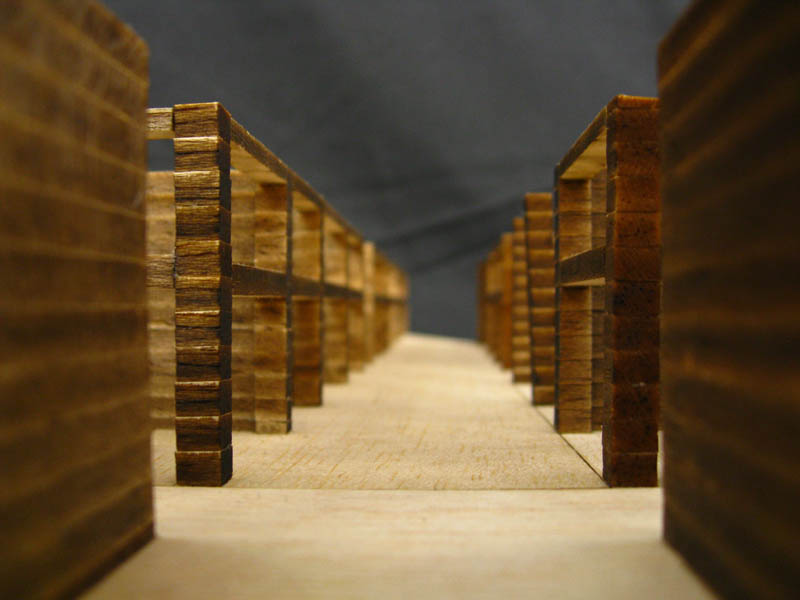

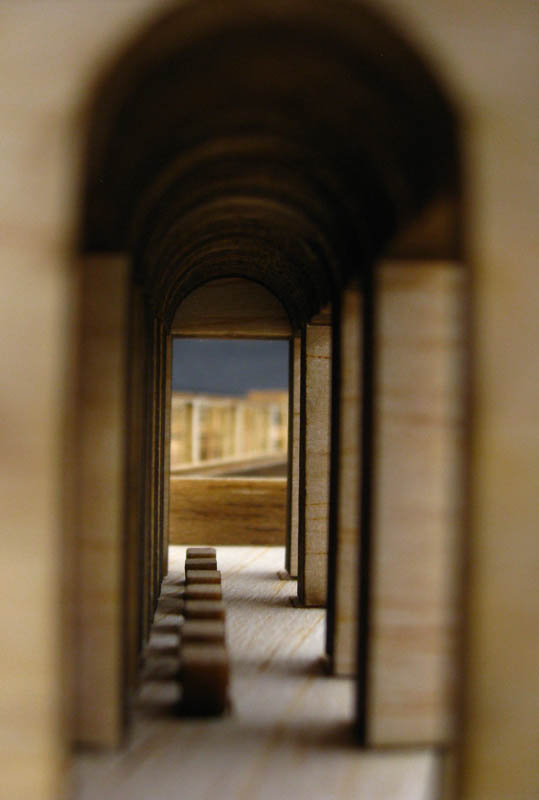

The subject of this thesis is the design of a covered and outdoor market in the city of Xanthi, which will also include a mosque and a cafe.
The reason for this study was the area in which the bazaar of Xanthi takes place every Saturday. On that day the area is flooded with sellers who are setting up their stalls with their wares and the consumers who flock to bargain for their purchases, creating a special atmosphere. The other days of the week the place presents a picture of desolation and abandonment.
The market design aims to overturn the prevailing setting the rest of the week, through balancing the influx of visitors, traders and consumers and maintain the atmosphere of the bazaar. The mosque and the cafe, enhance the desired effect, as in the surrounding area is not found a mosque, while cafes are reflecting, primarily, the modern form of the city.
Through incisions associated with the existing spatial conditions, is created a grid in which are amounted three parts stores on the ground floor of the market. In the middle part, two openings will facilitate the movement to the ground level in two axes. There are planned 29 branches. With the staircase and the elevator one is led to the second floor. There, is placed a space for the flea market, the mosque and the cafe. Three large gaps in the floor of the second floor, function as skylights to the shops on the ground floor. The materials selected for the walls and the floors are stone and concrete, marble for the indoors, cast floor for the outdoors and stone for the courtyard of the mosque.
Supervisor: Kanarelis Theoklis
Reference Number: 491








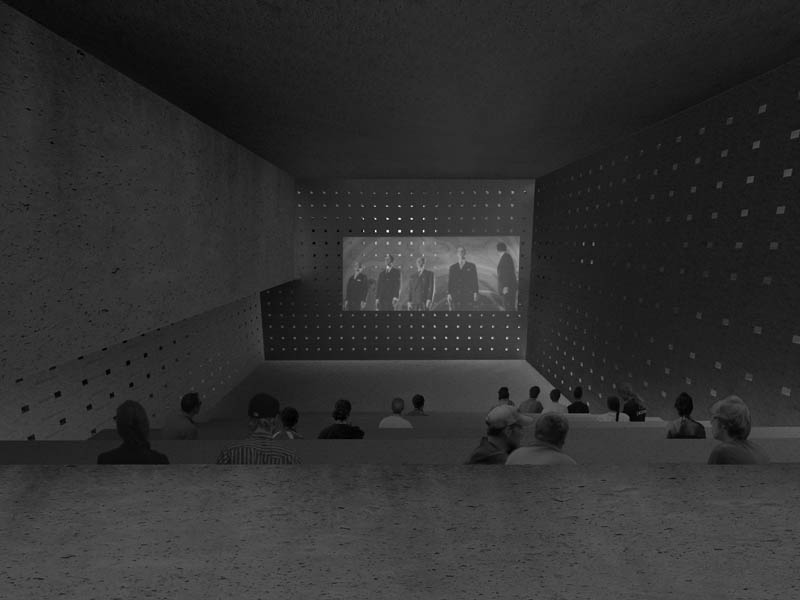

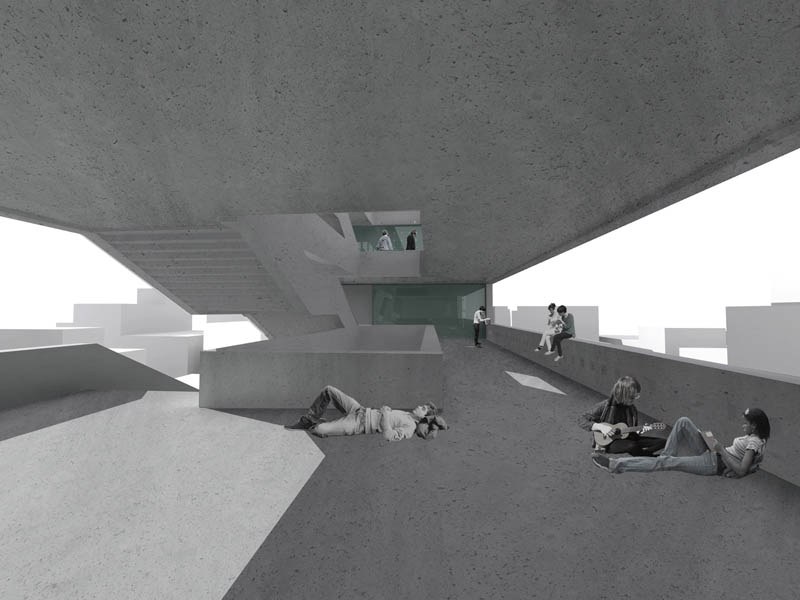

The subject of this thesis project is a public building in the city center of Volos, which aims to host activities related to architecture, the city itself and its residents.
Trigger for this choice was the research about participative design as theory and practice, both during its first appearance in the late 50s, as well as in its modern aspects in the global community. The initial aim of this thesis is not the building itself, but the creation of all the sufficient conditions, which would allow to the residents of the city to actively participate into the shaping of their built environment.
The building is located in the center of the city of Volos, between two other important public buildings, the university library and the church of Metamorphosis, which create a dipole of public action. The intention of the design is the building to perform as a public space for meeting and interchanging as regards as architecture, public built space and generally every aspect of everyday life in the urban space. The spaces are not designed for a specific action, determined from scratch, but offer all the necessary conditions and facilities for meeting, discussing, designing, constructing, presenting and storing. The central staircase is an essential part of the design. It lifts the public action from the streets, pedestrians and the square to the upper levers. Essentially, this project is about a public space developed in levels, ready to accept any kind of use its users would like to give it, beyond any design intention or even imagination. The final objective of this thesis is not only the building itself, but also the whole system of knowledge, contacts, ideas and more that would occur by the hosted actions.
Supervisors: Gavrilou Evelyn, Lykourioti Iris
Reference Number: 516
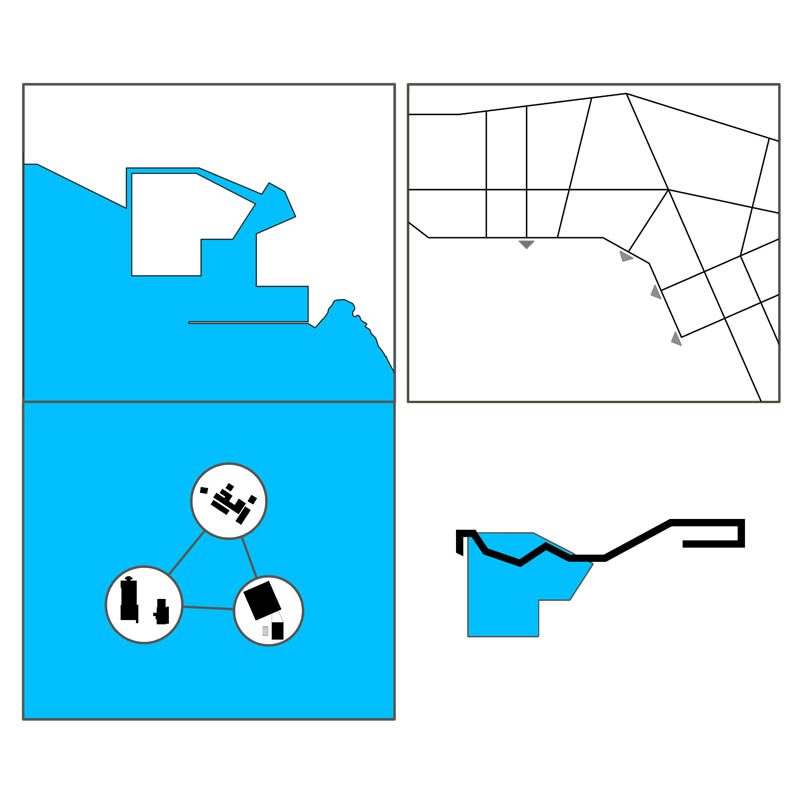

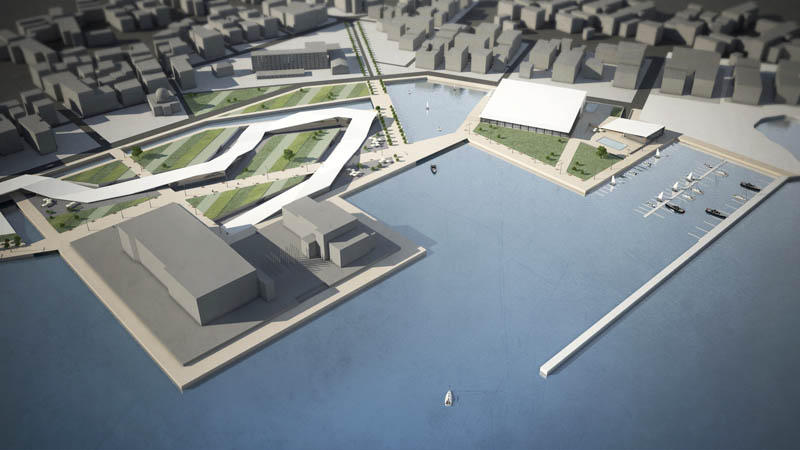

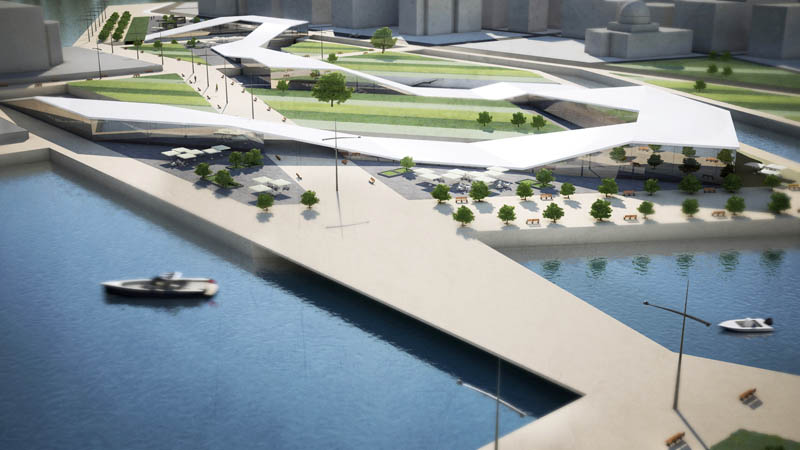



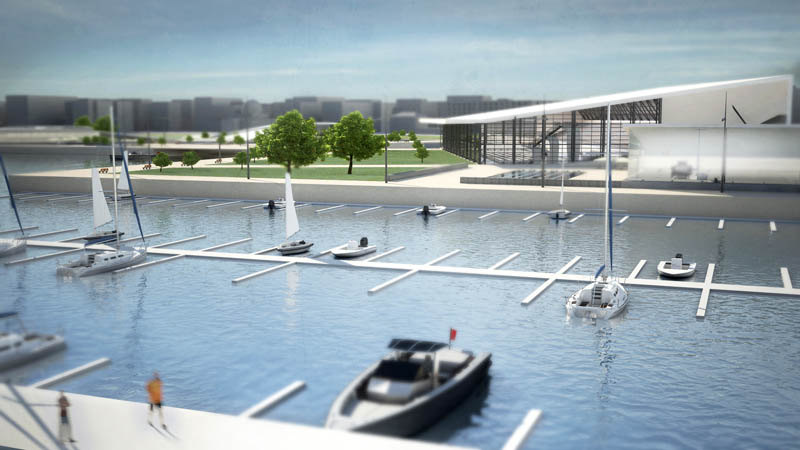

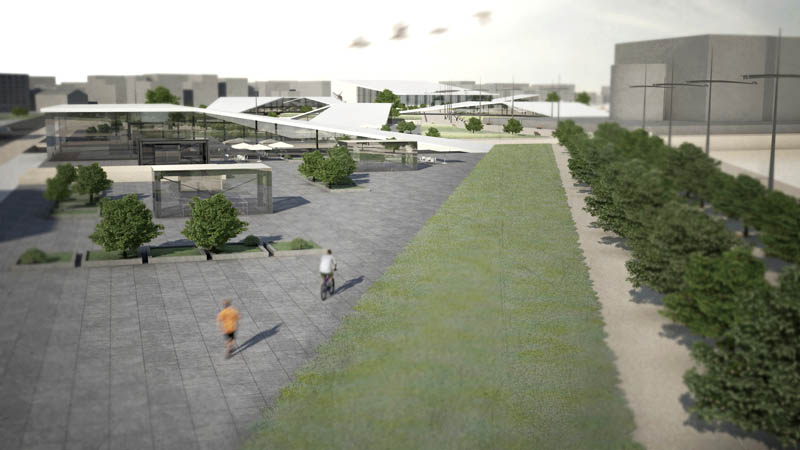

The field of the diploma project is Thessaloniki’s east waterfront: from the Concert Hall to the Poseidonio Athletic Center.
This inquiry started from the necessity and the attempts that seem to be taking place recently towards the redefining of Thessaloniki’s role in the Balkan, as well as the European standards, as a major pole of metropolitan development. The city is expected to form a program - guideline, which will allow its integration to the 21st century expectations as a city of international attraction. The intensification of the relationship with the sea and the highlight of the waterfront are significant factors for this potential.
Until recently, the city had a flat relation with the sea. The waterfront had never been an element of an holistic design approach. In 2001, the Municipality of Thessaloniki decides to create a European architectural competition. The 1st prize for the redesign and the renewal of the new Thessaloniki’s waterfront wins the design of P. Nikiforidis and B. Cuomo. The construction of the new waterfront, in the way that all of us know and experience, was completed in December 2013.
However, the question of reclaiming and redesigning the new waterfront’s east end remains open. Consequently, it becomes really obvious the essentiality for creating a locus - pole of cultural and socio-economic accumulation in the east part of the city. This place firstly will establish the main role of the new waterfront as the link between two destinations, and eventually will equilibrate the one-sided activity and development of Thessaloniki’s historical center.
Supervisor: Triantafillidis Giorgos
Reference Number: 499
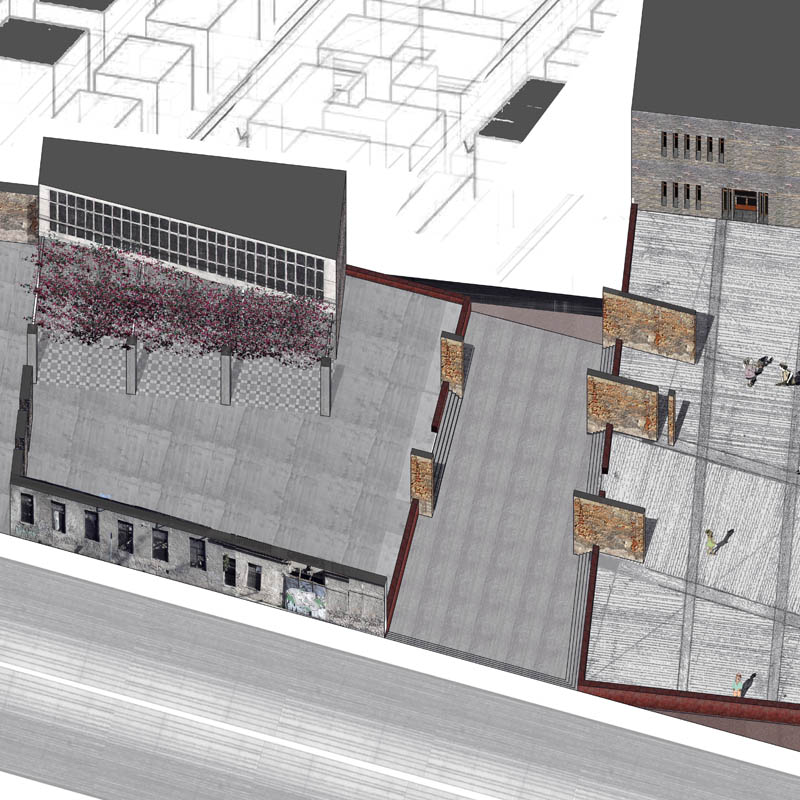

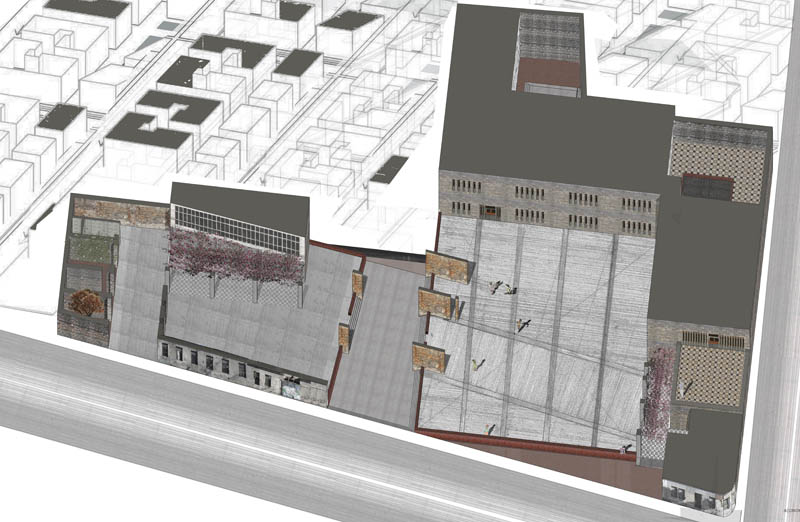

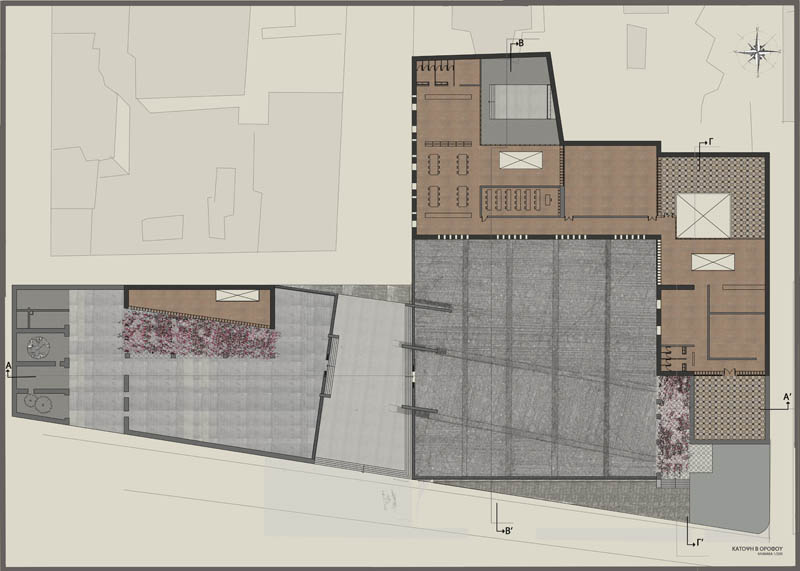

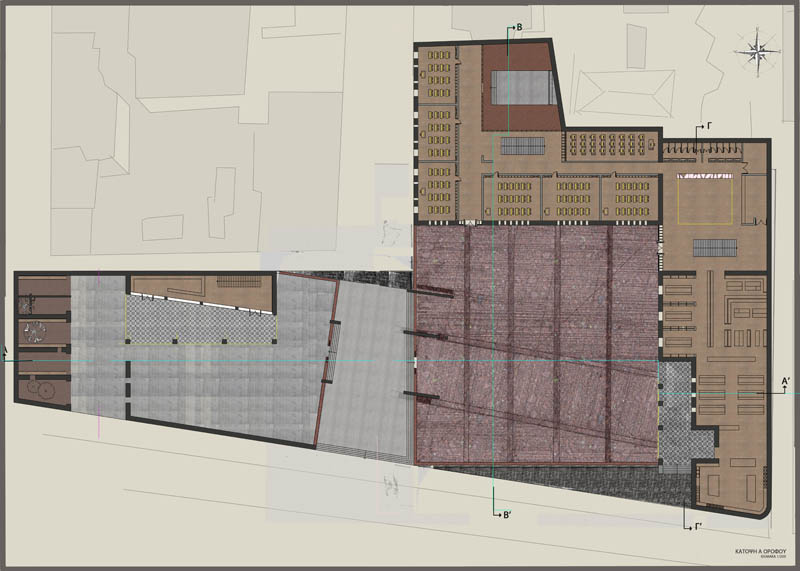

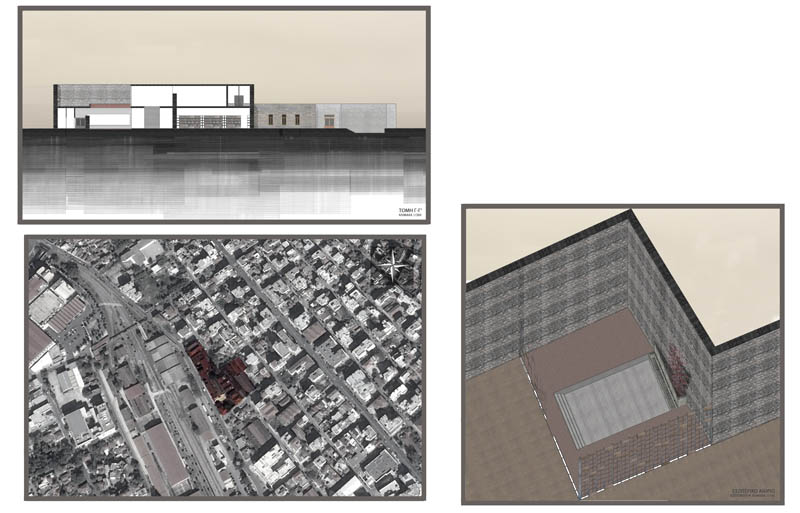

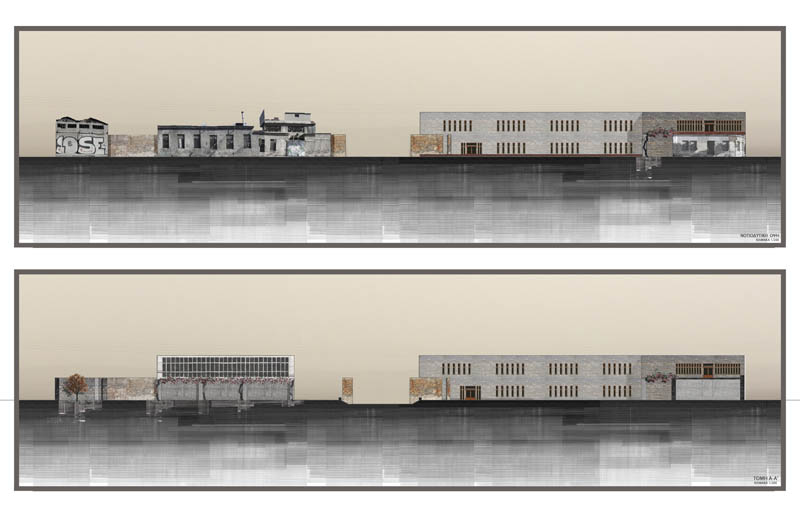

The building Glavanis-Kazazis is located opposite of the train station of Volos, on Papadiamanti street.
The project includes school facilities on the south side of the site, while a small cafe, a gym and open gardens supplement the rehabilitation project on north side of this former factory. The entrance on both parts of the project is signified by two already existing walls, consistent with the original factory plan.
The courtyard of the elementary school occupies a significant amount of space and is located almost in the middle of the whole site.
The school facilities are deployed in the perimeter of the courtyard, in a compact two-storey building. A two storey atrium, which is located on opposite side of the classrooms, aims to provide light inside the building and to extenuate the compact floor plan. Also,the section located just above the cafeteria, constitutes as well as a space of relief. The canteen is illuminated by an opening on the roof, which on the second floor forms a large semi-outdoor space around itself. In the space that houses the teachers’ offices and the secretary’s office, the supervision of the yard becomes possible through a balcony located right next to the teachers’ offices.
Finally, the school facilities include classrooms, a computer laboratory, a chemistry and physics laboratory, expansion spaces (courtyard, patio, multipurpose hall, small gym), a dining area and a study area for the hours after the end of the curriculum.
Supervisor: Kanarelis Theoklis
Reference Number: 498
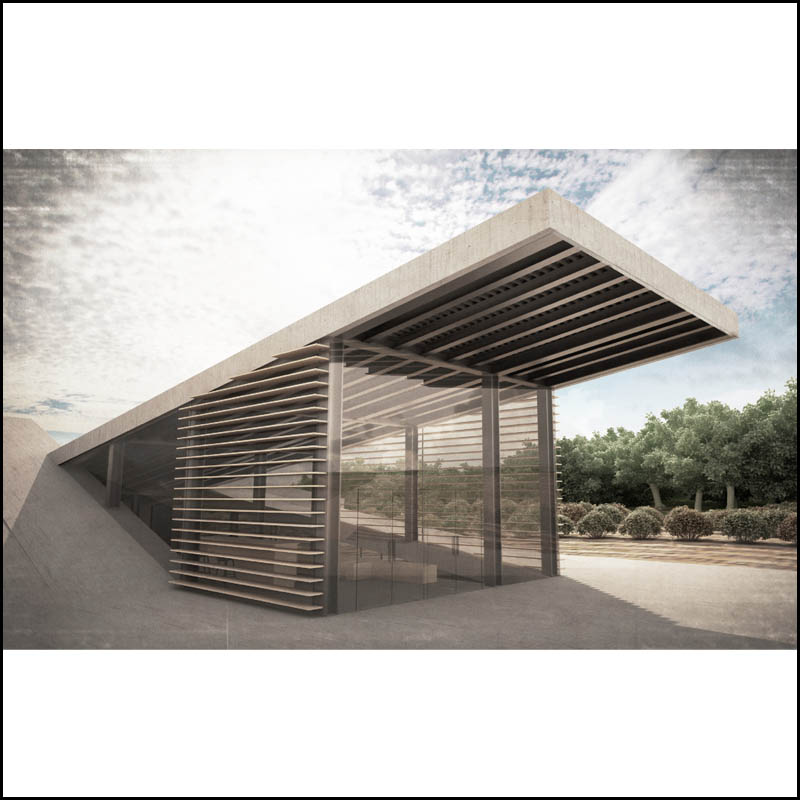

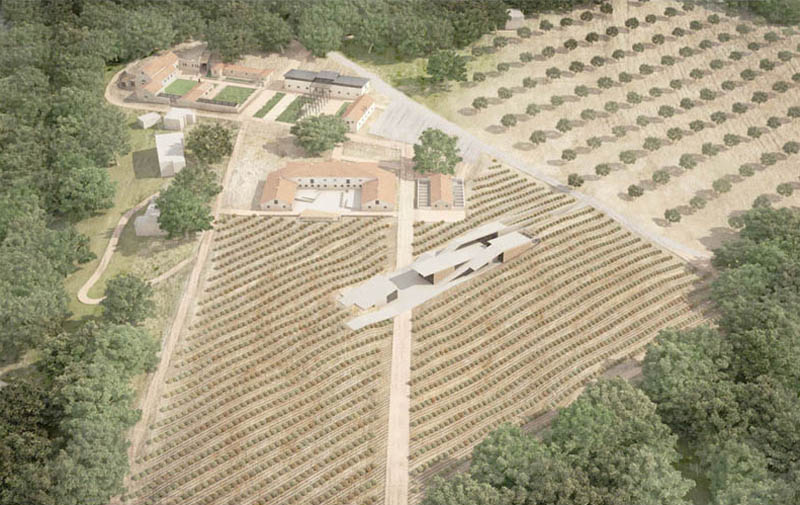

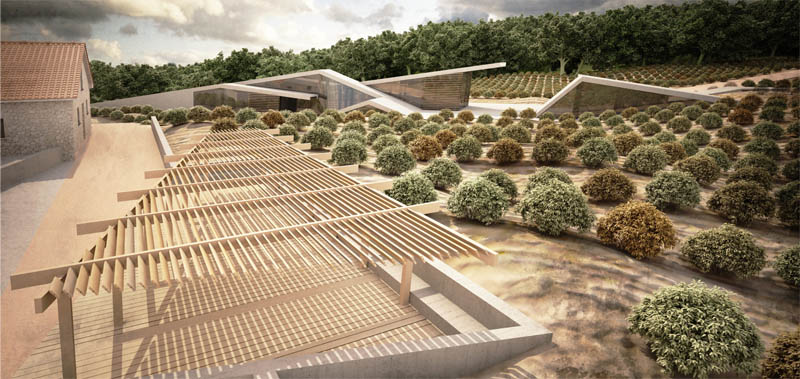

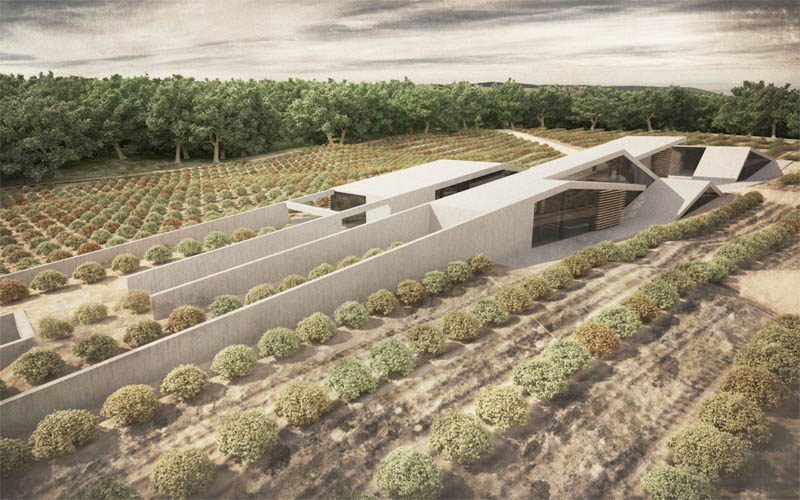





The current thesis concerns the design of a new wine production unit followed by vineyard cultivation in the Tatoi Estate, in Attiki.
The Tatoi Estate, well known as the residence of the ex royal family of Hellas is situated at the southeast foot of mount Parnes and covers the same area as the ancient Municipality of Dekeleia.
Despite its present decline and lack of exploitation, in the past it has been a model of autonomous farming with rich cattle growth and extensive agricultural activity. The wine production activity bloomed and wine under the name “Oinos Dekeleias’’ has been one of the most remarkable profit sources for the farm.
In recent years, there has been an effort regarding the re-opening of the Estate and the enhancement not only of its natural beauty but also of its architectural heritage based on the axis of original production. Having this initiative as motivation, the building of a new winery is proposed in the historical centre of the farm and in the heart of the ex agriculture and cattle-raising unit.
The new uses are being developed on three thematic axes namely education, recreation and production respectively.
The first two axes are included integrally in the environment of the existing buildings while the third is to the south, where the old vineyards used to be.
The existing buildings now host the information center, administration hall, wine museum, reading room, wine lab, exhibition and accommodation centre.
The recreation character that is being offered in the Estate is based on the predominance of nature. Therefore, the winery design follows the logic of minimal intervention respecting the substance of the ground and the surrounding nature making sure that most of it is below ground level.
Adopting the pattern of the linear arrangement of the new vineyards which are being placed on both sides and the gentle incline of the mountain, the winery, due to its long and slopy roofs which are being extended to meet the ground, becomes totally integrated in one with the landscape.
It is being developed in three levels including areas for production, administration and reception and waiting rooms for the public, offering views to the vineyards and the forest from the entrance level.
The challenge of the current design lies on the fact that new interventions are being invited to deal with a place of memory and exceptional as well as symbolic merit as a national monument of recent history and cultural heritage.
The vine and enological activity revival modifies the park into a dynamic touristic destination while offering multiple activities which aim at a sustainable development.
Supervisor: Adamakis Kostas
Reference Number: 490

